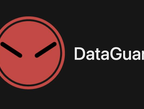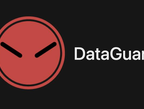dataGuard
- 0 Collaborators
Your Privacy's Guardian ~ Discover Our Shield. AnonymiCall: Blurs your face in video calls for privacy. Ideal for business, friends, or family. LicenseGuard: Securely store licenses and documents with encryption. Access anytime, anywhere. Protect your digital assets effortlessly. ...learn more
Project status: Under Development
Intel Technologies
Intel CPU
Overview / Usage
AnonymiCallAnonymiCall is a privacy-focused application designed to ensure user anonymity during video calls by automatically blurring faces in real-time. This application addresses the growing concerns around privacy and unauthorized facial recognition during video communications. Utilizing OpenCV and FaceDetector, AnonymiCall processes live video feeds from the user's camera, detects faces, and applies a blur effect, ensuring that personal identity remains protected during video interactions. The application is particularly useful for individuals who need to maintain confidentiality during virtual meetings or for those who prefer to stay anonymous in public video calls.
LicenseGuardLicenseGuard is an advanced application designed to protect sensitive information on documents, specifically targeting the blurring of personal information on licenses and IDs. By leveraging EasyOCR for text detection and NLTK for named entity recognition, LicenseGuard can identify and blur personal details such as names, dates, and locations on scanned images. This solution helps users to securely share documents without exposing sensitive information, making it invaluable for online verification processes, remote work environments, and compliance with data protection regulations. The application ensures that personal data is concealed, reducing the risk of identity theft and privacy breaches.
Problems Solved- Privacy Protection in Video Calls: AnonymiCall addresses the lack of privacy during video calls by automatically blurring faces, thus preventing unauthorized facial recognition and ensuring user anonymity.
- Secure Document Sharing: LicenseGuard tackles the issue of sensitive information exposure on documents, allowing users to share necessary documentation without risking personal data breaches.
- Compliance with Data Protection Regulations: Both applications help users adhere to data protection laws and regulations by safeguarding personal information during digital interactions.
- AnonymiCall: Deployed in virtual meeting platforms and public video calls where user anonymity is crucial.
- LicenseGuard: Utilized by businesses, educational institutions, and individuals for securely sharing documents requiring identity verification without revealing sensitive personal information.
Both applications enhance user privacy and security, offering practical solutions to everyday privacy challenges in digital communications and document handling.
Methodology / Approach
AnonymiCallAnonymiCall leverages advanced computer vision technology to ensure real-time privacy during video calls. The methodology involves the following steps:
-
Video Capture:
- The application uses OpenCV to capture live video feed from the user's camera.
- The resolution is set to 640x480 pixels for optimal performance and clarity.
-
Face Detection:
- The FaceDetector module from the cvzone library is employed to identify faces in each video frame.
- A confidence threshold of 0.75 is set to ensure reliable face detection.
-
Face Blurring:
- For each detected face, the bounding box coordinates are obtained.
- The face region is cropped and blurred using OpenCV's
cv2.blurfunction with a kernel size of 35x35 pixels. - The blurred face region is then overlaid back onto the original frame.
-
Real-time Display:
- The modified video frame with blurred faces is displayed to the user in real-time using OpenCV's
cv2.imshow.
- The modified video frame with blurred faces is displayed to the user in real-time using OpenCV's
LicenseGuard employs a combination of optical character recognition (OCR) and natural language processing (NLP) to secure sensitive information on documents. The methodology includes:
-
Image Upload and Display:
- A user-friendly interface is created using Tkinter, allowing users to upload images of their documents.
- The uploaded image is displayed using the PIL (Python Imaging Library) for easy viewing and interaction.
-
Optical Character Recognition (OCR):
- EasyOCR is utilized to detect and extract text from the uploaded image.
- The OCR results include bounding boxes and recognized text for each detected text region.
-
Text Analysis and Personal Information Detection:
- The recognized text is tokenized using NLTK (Natural Language Toolkit).
- Part-of-speech tagging and named entity recognition are performed to identify personal information such as names, dates, and locations.
- If personal information is detected, it is marked for blurring.
-
Blurring Sensitive Information:
- For each detected sensitive text, the corresponding bounding box is used to identify the region on the image.
- The region is blurred using OpenCV's
cv2.GaussianBlurwith a kernel size of 31x31 pixels. - Additionally, face detection is performed using OpenCV's Haar Cascade classifier, and any detected faces are blurred to ensure comprehensive privacy protection.
-
User Interaction:
- The application prompts users to enter specific text they wish to blur, providing flexibility and control over the information that is protected.
- The processed image with blurred sensitive information is displayed back to the user through the Tkinter interface.
By combining these technologies, AnonymiCall and LicenseGuard provide robust solutions for privacy protection. The use of real-time video processing and advanced OCR/NLP techniques ensures that both applications are effective in identifying and blurring sensitive information, thereby addressing privacy concerns in digital communications and document handling.
Technologies Used
- OpenCV: A powerful computer vision library used for video capture, face detection, and image processing.
- cvzone: A wrapper for OpenCV that simplifies the implementation of common computer vision tasks.
- EasyOCR: An optical character recognition library that supports multiple languages and provides high accuracy in text detection.
- NLTK: A comprehensive natural language processing toolkit used for text tokenization, part-of-speech tagging, and named entity recognition.
- Tkinter: A standard Python interface to the Tk GUI toolkit used for creating graphical user interfaces.
- PIL (Python Imaging Library): Used for image manipulation and display within the Tkinter interface.
Documents and Presentations
Repository
https://github.com/RahulThennarasu/dataGuard








